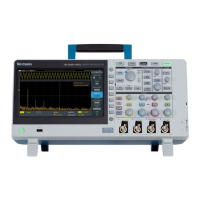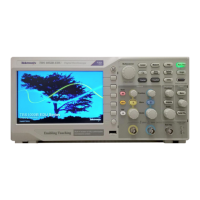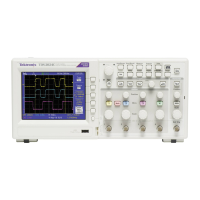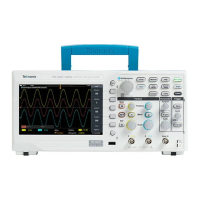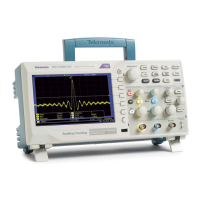Acquisition command group
Acquisition commands affect the acquisition of waveforms. These commands
control mode, averaging, and single-waveform acquisition.
Table 9: Acquisition commands
Command Command
ACQuire? on page 37 Returns current acquisition settings.
ACQuire:MAXSamplerate? on page 38 Returns the maximum real-time sample rate.
ACQuire:MODe on page 38 Sets or queries the instrument acquisition mode.
ACQuire:NUMACq? on page 40 Indicates the number of acquisitions that have
taken place since starting instrument acquisition.
ACQuire:NUMAVg on page 41 Sets the number of instrument waveform
acquisitions that make up an averaged
waveform.
ACQuire:STATE on page 41 Starts or stops instrument acquisitions.
ACQuire:STOPAfter on page 42 Tells the instrument when to stop taking
acquisitions.
Calibration and Diagnostic command group
Calibration and Diagnostic commands let you initiate the instrument self-
calibration routines and examine the results of diagnostic tests.
Table 10: Calibration and Diagnostic commands
Command Description
*CAL? on page 53 Performs an internal self-calibration and returns
its status.
CALibrate:FACtory on page 54 Starts the instrument internal factory calibration
operation.
CALibrate:FACtory:STATus? on page 55 Returns the factory calibration status value
saved in nonvolatile memory.
CALibrate:INTERNAL on page 56 Performs an internal self-calibration but does not
return any status.
CALibrate:INTERNal:STARt on page 56 Starts the internal signal path calibration.
CALibrate:INTERNal:STATus? on page 57 Returns the current status of the internal signal
path calibration.
CALibrate:RESults? on page 58 Returns the status of all calibration subsystems
without performing an SPC operation.
CALibrate:RESults:FACtory? on page 58 Returns the status of internal and factory
calibration
CALibrate:RESults:SPC? on page 59 Returns the results of the last SPC operation
Command groups
14 TBS2000 Series Programmer
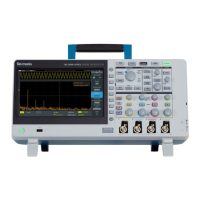
